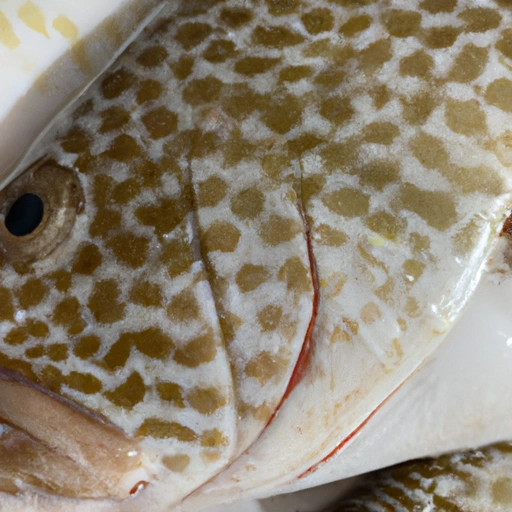Grouper
Description

Grouper is a sought-after seafood ingredient known for its mild yet distinct flavor, firm texture, and large flakes. It's a versatile fish that plays a prominent role in many culinary traditions, appealing to a global audience by adapting to a wide range of seasonings and cooking techniques.
Common uses
Grouper is commonly used in a variety of dishes, ranging from soups and stews to grilled and baked preparations. Its flesh, which holds up well to different cooking methods, is frequently found in ceviches, chowders, and as the star in fish fillet meals.
Nutritional value
Calories
A typical serving of 3.5 ounces (100 grams) of cooked grouper contains approximately 92 kcal (calories).
Protein
This serving size provides about 19 grams of protein, making it a substantial source for dietary needs.
Fat
Grouper is relatively low in fat with just 1.1 grams, including a small amount of heart-healthy omega-3 fatty acids.
Carbohydrates
Grouper contains virtually no carbohydrates, making it well-suited for low-carb diets.
Vitamins
It's a good source of vitamins, particularly B-vitamins such as B12 and niacin.
Minerals
Grouper is also rich in minerals, offering a good dose of phosphorus, potassium, and selenium.
Health benefits
Thanks to its high protein content and low levels of saturated fat, grouper is an excellent choice for maintaining muscle mass and supporting heart health. The presence of omega-3 fatty acids contributes to cardiovascular and brain health, while the vitamins and minerals it contains are essential for overall wellbeing.
Potential risks
Some grouper species may contain higher levels of mercury, making it important for vulnerable populations, such as pregnant women and young children, to limit their consumption. Additionally, overfishing has led to the decline of certain grouper species, making responsible sourcing important for environmental sustainability.
Common recipes
Grouper is featured in a variety of recipes, including Mediterranean-inspired dishes like grilled grouper with lemon and herbs, Caribbean-style grouper with mango salsa, and Asian stir-fries.
Cooking methods
It can be grilled, baked, fried, sautéed, poached, or steamed, making it adaptable to various culinary traditions and techniques.
Pairing with other ingredients
Grouper pairs beautifully with a multitude of flavors, from citrus and garlic to more robust spices and tropical fruits. It also complements a variety of side dishes, including vegetables, rice, and pasta.
Summary
Grouper is a delicious and nutritious seafood choice that fits into a myriad of recipes across the globe. Its substantial protein content and beneficial nutrients make it a healthy option for many diets. While there are some concerns about mercury content and sustainability, when sourced responsibly, grouper can be enjoyed as part of a balanced and environmentally conscious diet. Its culinary versatility makes it a beloved ingredient from America to Europe and beyond, offering a taste of the sea that can be enjoyed in countless ways.